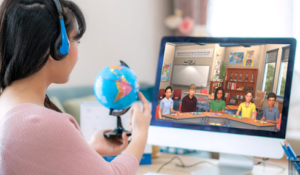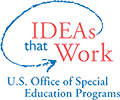Share this Guide
Implementation Guide for High-Leverage Practice #18: Use Strategies to Promote Active Student Engagement
Definition: Mixed reality simulation (MRS) is a type of simulated interaction that is gaining popularity in teacher preparation. It is a well-validated approach for candidates in fields outside of education, including the military and medical field (McGaghie, Issenberg, Petrusa, & Scalese, 2010), and has been applied successfully in a small number of studies in education. MRS extends upon traditional role play and allows pre- and in-service teachers the opportunity to purposefully practice important teaching strategies they are learning about prior to, or alongside, their K-12 field experiences (Driver, Zimmer, & Murphy, 2008). The key difference from a role play is that MRS allows for real-time interaction that mimics an authentic classroom setting. Education simulations allow pre-service teachers to practice decision making and instructional skills in an authentic environment that allows them to see how real K-12 students might respond and adjust their actions based on those responses (Dieker, Hynes, Hughes, & Straub, 2014). Further, the simulations provide meaningful opportunities for instructor and peer coaching and feedback (Zimmer, Driver, & McHatton, 2020). Research on simulated interactions have been shown to yield changes in knowledge and instructional skill (Dawson & Lignugaris-Kraft, 2017; Garland et al., 2012 & Vasquez III et al., 2017; Storey & Cox, 2015).
Description of this activity: In this practice-based learning opportunity (PLO), Driver and colleagues provide a description of how to use MRS to teach candidates to use strategies for actively engaging students (HLP #18). Specifically, candidates play the role of a teacher in an inclusion sixth-grade science class. One of the students in the group is Nate; he has high-functioning autism. The candidates are asked to first complete pre-work activities and then plan an explicit instruction lesson that focuses on a science standard and engaging students (HLP #18). To implement this instruction, candidates and teachers will need to first have a command of explicit instruction and how to plan a lesson involving explicit instruction (HLP #16). When planning the explicit instruction lesson, candidates and teachers are asked to include active engagement strategies in the lesson to demonstrate their knowledge of HLP #18. Once candidates plan the lesson, they engage in the simulation using their planned lesson. In the Mursion simulator, candidates have an opportunity to enact HLP #18 with a small group of student avatars who are played by a live actor. The avatars respond to the candidates’ attempts based on directions provided to them. Once the simulation concludes, peers and/or the faculty member can provide feedback to the candidate using a rubric. If peers provide feedback, they will need to be coached to do so. This PLO addresses the second and fourth phases of the Enactment Cycle, which is developed around a specific student and content area but could be adapted for a different student and content area.
Context: This PLO can be employed at different points in the teacher education program, beginning teacher induction programs, and professional development efforts. Activities described in the implementation guide can be used in their entirety, or specific components can be used depending on candidates’ or teachers’ instructional needs (e.g., integrated in coursework, ongoing professional development, professional learning communities). This resource is designed to be customizable, depending on prior knowledge and other needs of candidates and the context of the learning community. This simulation should follow instruction in HLP #16, using explicit instruction (see other PLOs on the CEEDAR website for HLP #16) and planning explicit instruction lessons, as designing and implementing the mini-lessons requires knowledge of HLP #15. It is important to note that the Mursion simulation incorporated in this PLO can be substituted with a role play or some other type of simulation, such as microteaching or simulated interactions (see https://ceedar.education.ufl.edu/plos/ for examples of simulations).
Note: This work was funded by the CEEDAR Center under the U.S. Department of Education, Office of Special Education Programs, Award No. H325A120003. These materials are free to use. If used, please cite Zimmer, K., Driver, M. K., & Peterson-Ahmad, M. B. (2023). Simulation package for high-leverage practice #18: Use strategies to promote active student engagement.
Stage 1: (Pre-Work) Developing Prerequisite Knowledge for Using Strategies to Promote Active Student Engagement
What is this stage about?
In this stage, candidates build prerequisite knowledge needed to use strategies to promote active student engagement to develop an understanding of HLP #18. The instructor ensures, through a variety of activities, that candidates understand the importance of active student engagement to learning and strategies for promoting active student engagement, including science instruction. This stage likely needs to occur over a couple lessons.
How does the instructor implement this stage?
Step 1: Prior to class, candidates should read selected articles on promoting active student engagement for students with disabilities (Nagro et al., 2016; Johnson et al., 2022) and respond to reflection questions (Resource A). Make sure candidates realize they are reading these articles to ultimately plan engaging mini-lessons in science for a student with a disability. Reflection questions can also be completed in class.
Step 2: If course time permits, instructors should strongly consider developing a lecture with accompanying activities based on Resource B, available on the National Intensive Intervention Center website. This module provides extensive guidance about how to elicit responses from students that promote engagement. The modules in this resource could also be completed outside class.
Step 3: During class, watch the video Using Strategies to Promote Active Student Engagement HLP #18” Video and record your responses to the time-stamped questions provided in Resource C. Reflect on your top three takeaways from the video and how you might include them in the lesson you will have to plan. Discuss candidates’ takeaways as a class. If using Mursion rather than microteaching or some other type of simulation, please alert candidates to the fact that the avatars will only be able to respond to questions, turn and talk to their peer, and write responses on their iPads. Also, all candidates should know that the structure of explicit instruction can engage students. For example, demonstrations can be engaging when pictures, objects, and interesting content are used.
Step 4: Develop candidate knowledge for using questions to promote engagement. Have candidates review the Depth of Knowledge diagram and question starters (Resource D). In small groups, have candidates develop three questions that they might pose to help students understand how the Earth’s tilt and position of the sun influences the outside temperature (see state standards in Resource E).
Step 5: Have candidates watch the video Asking Scientific Questions (Resource F). Have them reflect on how their questions were similar to or different from those that the expert deemed effective. If needed, have candidates restructure their questions.
Step 6: For additional practice, have candidates/teachers watch the video Classroom Questioning Strategies (Resource F) and discuss the ways in which questions might support the cognitive and behavioral engagement of students with language-based disabilities or interfere with it. Discuss how two to three questions posed in the video could be restructured to be more accessible for students with cognitive or language-based disabilities.
Materials and resources needed to implement:
Resource A: Reflection Questions for Assigned Readings
Resource B: Using Effective Methods to Elicit Frequent Responses
Resource C: Strategies to Promote Active Student Engagement (HLP #18)
Resource D: Depth of Knowledge Diagram and Question Starters
Resource E: Science Standards for Sixth Grade
Resource F: Asking Scientific Questions
Resource G: Classroom Questioning Strategies
Additional readings:
Nagro, S. A., Hooks, S. D., Fraser, D. W., & Cornelius, K. E. (2016). Whole group response strategies to promote student engagement in inclusive classrooms. Teaching Exceptional Children, 48(5), 243-249.
Johnson, H. N., Wakeman, S. Y., & Clausen, A.M. (2022). Inclusive supports and strategies to increase opportunities to respond for all learners. TEACHING Exceptional Children, 0(0). https://doi.org/10.1177/00400599221114432
Questions faculty/professional development providers might have when teaching candidates prerequisite knowledge in this stage:
A fair amount of prerequisite work is necessary for this phase. How do I structure this work in my course and/or professional development so that it is not overwhelming?
A range of resources is provided for instructors to use depending on their candidates’ or teachers’ level of knowledge needs. It is important to recognize when selecting resources and activities that candidates and teachers will need facility with the knowledge represented in these resources.
Can the prerequisite work be embedded into one class session?
The readings are easy to consume, and the videos are not lengthy but may take more than one class session depending on candidates’ knowledge. If you face time constraints, consider prioritizing areas for which candidates may have received less direct instruction.
Stage 2: Developing Prerequisite Knowledge for Structuring Guided Inquiry Lessons in Science
What is this stage about?
In this stage, candidates develop prerequisite knowledge needed to understand what a structured guided inquiry approach is and the strategies that comprise it. The instructor ensures, through a variety of activities, that candidates understand how the structured guided inquiry approach is structured.
How does the instructor implement this stage?
Step 1: Prior to class or professional session, read the scenario (Resource H). Then, point students to the science standard and substandard in Resource E.
Step 2: Make a table/t-chart of the knowledge and skills embedded in the assigned substandard and lesson that accompanies it. What must students be able to know and do to be successful in this lesson (Resources E, I, and K)?
Step 3: Deepen candidates’ knowledge of the structured guided inquiry process by reading articles and answering reflection questions. They should understand why the structured guided inquiry process is important for students with disabilities and what teachers can do to support these students. Read articles and answer reflection questions in Resource A.
Step 4: See the summary of Nate’s assessment data and Individualized Education Program (IEP) goals (Resource J), then analyze the unit, specifically the mini-lessons provided in Resource K. The instructor should select one of the mini-lessons for the candidates to implement. Use Resource L to discuss Nate’s needs and strengths related to planning the selected mini-lesson.
Materials and resources needed to implement:
Resource A: Reflection Questions for Assigned Readings
Resource E: Science Standards for Sixth Grade
Resource H: Instructional Scenario
Resource I: T-Chart for Knowledge and Skills
Resource J: Summary of Nate’s Assessment Data, Goals, and Objectives
Resource K: Structured Inquiry Science Unit
Resource L: Guiding Questions for Planning Mini-Lessons
Additional Readings:
Watt, S. J., Therrien, W. J., Kaldenberg, E., & Taylor, J. (2013). Promoting inclusive practices in inquiry-based science classrooms. Teaching Exceptional Children, 45(4), 40-48.
Kaldenerg, E., Therrien, W., Watt, S., Gorsh, J., & Taylor, J. C. (2011). Three keys to success in science for students with learning disabilities. Science Scope, 35(3), 24-27.
Spaulding, L. S., & Flannagan, J. S. (2012). DIS2ECT: A framework for effective inclusive science instruction. Teaching Exceptional Children, 44(6), 6-14.
Collins L. W., & Fulton, L. (2017). Promising practices for supporting students with writing disabilities through writing in science. Teaching Exceptional Children, 49(3), 194-203.
Additional resource that is helpful in instructing students with autism: The AFIRM website provides modules designed to help teachers learn a step-by-step process of planning for, using, and monitoring an evidence-based practice (EBP): https://afirm.fpg.unc.edu/selecting-ebp
Questions faculty/professional development providers might have when teaching candidates prerequisite knowledge in this stage:
A fair amount of prerequisite work is necessary for this phase. How do I structure this work so that it is not overwhelming?
It is important to recognize that candidates and teachers will need facility with knowledge represented in these resources if they are going to be successful in teaching a structured inquiry science lesson. If candidates/teachers have this knowledge from previous experience and coursework, they may not need to engage in all the reading and reflection activities. Alternatively, if time constraints are a major issue, consider using subject-matter content that might be more familiar to candidates/teachers and omit this phase.
Stage 3: Lesson Planning
What is this stage about?
Candidates plan an explicit instruction lesson that is part of the structured inquiry guided unit in Resource K. The instructor directs them to include engagement strategies based on the research they have read and the material that is referenced in the structured inquiry guided unit.
How does the instructor implement this stage?
Step 1: Use the mini-lesson selected in Stage 2 from Resource K.
Step 2: Have candidates review resources listed in Resource K for the selected mini-lesson. They can do so prior to attending class.
Step 3: Have candidates review their responses to Resource L prior to the planning lesson. Also, have candidates review the Lesson Plan Template (Resource M), the Lesson Plan Rubric (Resource N), and the Lesson Reflection Questions (Resource O). Have candidates discuss how components of explicit instruction and active engagement can be incorporated into the lesson. They should also discuss any EBPs that will support student learning specific to the concepts/skills/strategies taught in the mini-lessons. Candidates should be directed to use some of the different materials and resources made available for this PLO.
Step 4: Plan a lesson using the Lesson Planning Framework either individually, in pairs, or in cooperative groups.
Materials and resources needed to implement:
Resource K: Structured Inquiry Science Unit
Resource L: Guiding Questions for Planning Mini-Lessons
Resource M: Lesson Plan Template
Resource N: Lesson Plan Rubric
Resource O: Lesson Reflection Questions
Questions faculty/professional development providers might have when teaching candidates prerequisite knowledge in this stage:
Can candidates teach two lessons?
Yes, depending on the time available in the course and candidates’ level of sophistication.
Can candidates use the graphic organizer in Lesson 1 as independent practice?
Yes, it would be an excellent assessment of Nate and his peers’ understanding of the concepts and vocabulary fundamental to the inquiry unit.
Can candidates teach the entire unit?
Yes, but keep in mind that Mursion is meant for the teacher to provide direct instruction to a small group. Using it to simulate cooperative learning would be challenging. Candidates could, however, teach the lesson in their field placement.
Do instructors have to use the provided Lesson Planning Framework and Evaluation Rubric?
No, instructors can use frameworks and rubrics they have created or adapt those provided in this module.
For 10 or 20 candidates, implementing one of the planned lessons could take considerable time. What can instructors do to address time constraints?
Candidates could pair to teach the lesson, or one person in the small group could teach while the remainder of the group provides feedback. After feedback, maybe a pair of other candidates could teach the lesson.
Stage 4: Teach the Lesson
What is this stage about?
In this stage, candidates practice enacting HLP #18 by using explicit instruction and strategies for active engagement. Candidates should record their teaching experience/simulation to support post-analysis and reflection activities. In lieu of the multiple-reality-simulation scenario, a role-play scenario can be used where candidates enact the instruction, and their peers play the role of students. Instructors can also choose to have candidates teach the strategy to P-12 students; however, they must find ways to provide specific feedback on the lesson.
How does the instructor implement this stage?
Step 1: Instructor schedules MRS sessions and meets with lab personnel. Instructor provides Full Scenario for the Simulation Specialist (Resource P). This list of Hits and Misses has been developed to assist MRS personnel in guiding candidates to engage in desired behaviors (Hits) and avoid undesired behaviors (Misses) depending on what the person playing the teacher does.
Step 2: Instructor ensures that candidates have access to the virtual platforms and understand how interactions are scored. Instructor reviews lesson rubric with candidates to clarify expectations (Resource N).
Step 3: Candidates lead the simulated lesson and video record themselves to review and reflect on the lesson using the rubric. In a role-play situation, one candidate/teacher might provide the instruction while peers play the role of students.
Materials and resources needed to implement:
Resource N: Lesson Rubric
Resource P: Full Scenario for the Simulation (HITS/MISSES)
Stage 5: Reflection and Analysis
What is this stage about?
In this stage, candidates analyze and reflect on their experience implementing HLP #18. Candidates can also be assigned to view and evaluate the simulation lesson of several peers. Instructors can also provide feedback to candidates on their sessions.
How does the instructor implement this stage?
Step 1: Candidates watch their video implementing HLP #18 and reflect on it using the Lesson Plan Rubric (Resource N) and Lesson Reflection Questions (Resource O). They can score the lesson rubric and provide written responses to the questions if desired.
Step 2: Candidates watch one or more peers’ videos of the simulated lesson and score them using the lesson rubric.
Step 3: Candidates provide peers with feedback using the peer feedback form (Resource Q).
Materials and resources needed to implement:
Resource M: Lesson Plan Template
Resource N: Lesson Plan Rubric
Resource O: Lesson Reflection Questions
Questions faculty/professional development providers might have when teaching candidates prerequisite knowledge in this stage:
Candidates are often reluctant to provide constructive feedback to their peers. How can an instructor help?
The instructor can role play how to provide constructive feedback with a candidate in the course, and then candidates can discuss how that constructive feedback was supportive and helpful. Candidates could be provided with role-play scenarios in which they provide constructive feedback.
Resources

- Resource A: Reading Reflection Questions
- Resource B: Using Effective Methods to Elicit Frequent Responses
- Resource C: Strategies to Promote Active Student Engagement (HLP #18)
- Resource D: Depth of Knowledge Diagram and Question Starters
- Resource E: Science Standards for Sixth Grade
- Resource F: Asking Scientific Questions
- Resource G: Classroom Questioning Strategies
- Resource H: Instructional Scenario
- Resource I: T-Chart for Knowledge and Skills needed to meet selected standard
- Resource J: Summary of Nate’s IEP Assessment Data, Goals, and Objectives
- Resource K: Structured Science Inquiry Sixth Grade
- Resource L: Guiding Questions for Planning Mini-Lessons
- Resource M: Lesson Plan Template
- Resource N: Lesson Plan Rubric
- Resource O: Lesson Reflection Questions for HLP #18
- Resource P: Scenario for Simulation Specialist (Hits/Misses)
- Resource Q: Peer Feedback Form





